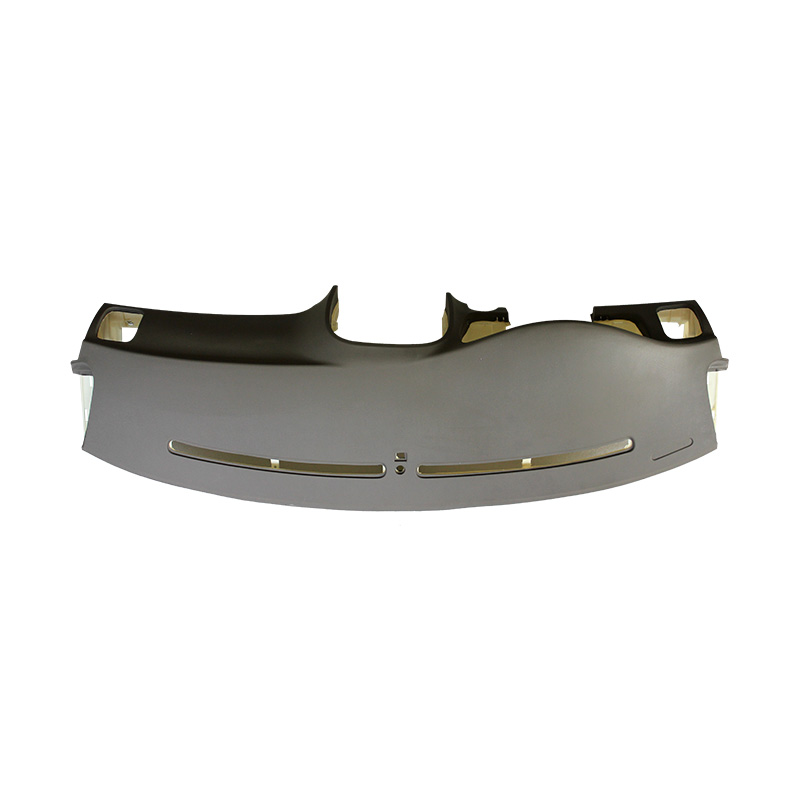2025-10-09
Modern automotive technology has evolved rapidly, and one of the most visible examples of this progress is the auto dashboard. Once a simple panel displaying basic information like speed and fuel level, the dashboard has now become a smart, interactive command center that connects the driver, vehicle, and environment. When we talk about whether an auto dashboard is “responsive,” we’re referring to its ability to react quickly and accurately to driver inputs, environmental changes, and system updates. Let’s explore what makes modern dashboards responsive and why responsiveness is crucial for safety, comfort, and driving experience.
In the past, dashboards were purely mechanical — analog gauges moved in response to physical sensors. While reliable, they were limited in how quickly and precisely they could display information. Today’s vehicles, however, are equipped with digital or hybrid dashboards that integrate microprocessors, sensors, and software to deliver instant feedback.
These digital dashboards are highly responsive, capable of processing data from multiple sources — such as the engine, brakes, navigation, and infotainment systems — in real time. For example, a digital speedometer can update within milliseconds as the car accelerates or slows down, while the navigation screen adjusts instantly to route changes or traffic alerts.
A responsive dashboard means that drivers can receive up-to-date and accurate information without delay. This includes data such as speed, fuel economy, tire pressure, engine performance, and external conditions.
Modern dashboards often include head-up displays (HUDs) that project key information directly onto the windshield, reducing the need for drivers to look away from the road. These systems rely on responsive sensors and processors to provide real-time visual feedback, improving safety and awareness. For instance, when the car detects a sudden drop in tire pressure, the dashboard immediately alerts the driver with a visual and audible warning — no lag, no guesswork.
Many modern cars feature touchscreen dashboards similar to smartphones or tablets. Responsiveness in this context refers to how quickly and accurately the screen reacts to touch gestures such as swiping, tapping, or pinching.
A responsive dashboard touchscreen enhances usability by minimizing driver distraction. If a driver wants to adjust the air conditioning, change music, or check navigation, the system should respond instantly and smoothly. Laggy or unresponsive screens can frustrate drivers and even pose safety risks if they divert too much attention from the road.
High-end vehicles use capacitive touch technology, advanced processors, and optimized software to ensure that the display responds within milliseconds, providing a seamless, intuitive experience.
The modern auto dashboard doesn’t operate in isolation. It communicates continuously with various vehicle control units (ECUs) — the brain of the car. These include the engine control unit, transmission, brake system, and even advanced driver assistance systems (ADAS).
Because of this integration, a responsive dashboard can instantly reflect real-time vehicle performance. For example:
All of these responses happen within fractions of a second, showcasing the responsiveness of modern automotive systems.
Responsiveness is not limited to touch or visual display — it extends to voice and gesture control. Many new dashboards are equipped with AI-powered voice assistants, allowing drivers to control navigation, make calls, or adjust settings hands-free.
A responsive system should understand natural language commands and execute them promptly. For example, if a driver says, “Turn up the temperature to 24 degrees,” the dashboard should immediately process and apply the command. Similarly, gesture-responsive dashboards, found in luxury vehicles, allow drivers to adjust volume or switch songs with simple hand motions, further enhancing convenience and safety.
One of the key advantages of digital dashboards is that they can improve over time through software updates. Manufacturers often release firmware upgrades to enhance responsiveness, fix bugs, or introduce new features.
Some vehicles even use machine learning algorithms to adapt the dashboard interface based on the driver’s habits. For instance, if a driver frequently uses navigation or music apps, the dashboard may automatically prioritize these functions for quicker access — demonstrating intelligent, responsive design.
A responsive dashboard isn’t just about convenience — it’s a critical safety feature. Quick system response ensures that the driver receives vital warnings immediately, such as brake system failures, collision alerts, or lane departure notifications.
In emergency situations, milliseconds can make a difference. A highly responsive dashboard allows the driver to react faster and make informed decisions, helping prevent accidents and improving overall road safety.
Yes, modern auto dashboards are highly responsive, combining fast processing power, advanced sensors, intuitive touch and voice control, and real-time system integration. This responsiveness enhances not only driver comfort and convenience but also vehicle safety and operational efficiency.
As automotive technology continues to evolve — especially with the rise of electric and autonomous vehicles — dashboards will become even more intelligent, adaptive, and user-friendly. In the future, we can expect dashboards that anticipate driver needs before commands are even given, creating a seamless and connected driving experience.
